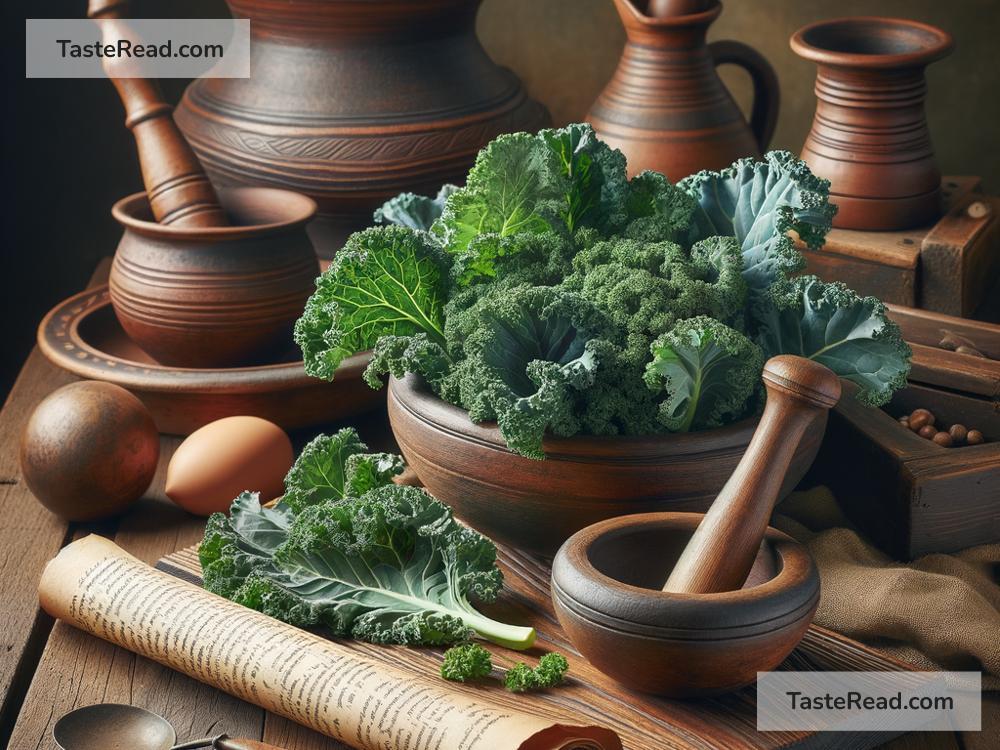The Fascinating History of Kale in Ancient Diets
Kale is a superfood that seems to be everywhere these days—in smoothies, salads, and even chips. But did you know that kale has a long and fascinating history stretching back thousands of years? This humble green vegetable has played a key role in diets around the world and has been loved by generations of people for its health benefits and versatility. Let’s take a journey through time to explore kale’s incredible story.
What Is Kale?
Before diving into its history, let’s talk about what kale actually is. Kale belongs to the Brassica family, which includes other popular vegetables like broccoli, cabbage, and cauliflower. It’s a leafy green with curly or flat leaves and a slightly bitter taste. Today, kale is celebrated for being packed with vitamins, minerals, antioxidants, and fiber.
Kale’s Early Roots in Ancient History
Kale’s history goes back at least 2,000 years. It is believed to have originated in the eastern Mediterranean region, including modern-day Greece and Turkey. The ancient Greeks and Romans were among the first to cultivate and eat kale, long before our current fascination with kale smoothies!
The ancestors of kale were wild plants that grew freely across the Mediterranean. People back then discovered their leaves could be eaten and were hardy enough to survive various weather conditions, making them an ideal choice for farming. Kale provided nutrition during times when other crops were scarce.
Kale in Ancient Greek and Roman Diets
Kale was a popular vegetable in ancient Greece and Rome. The Greeks grew many leafy greens, calling them “cruciferous vegetables,” and kale was one of their favorites. It was used both as food and medicine. Ancient Greek doctors believed kale could cure stomach problems and aid digestion, so it was often recommended for sick patients.
The Romans enjoyed kale too. They cultivated different types of kale, some with curly leaves and others flat. Roman cooks prepared kale by boiling it into stews or mixing it with other vegetables and herbs to make flavorful dishes. It was considered essential for a balanced diet, especially for soldiers who needed strength and endurance.
Kale Spreads Across Europe
As the Roman Empire expanded, kale traveled with it. European farmers began growing kale in abundance during the Middle Ages. It became an important crop because it could survive cold winters when other vegetables couldn’t. Kale provided vital nutrients during harsh seasons when food supplies were limited.
In medieval Europe, kale was a staple food for peasants. It was easy to grow, inexpensive, and filling. People used kale to make soups, broths, and porridge, often alongside grains like barley. It wasn’t fancy, but it kept hunger at bay and contributed to a relatively healthy diet.
Kale in Scotland: The Kale Yard
Kale eventually earned a special place in Scottish history. In Scotland, a vegetable garden was often called a “kale yard,” because kale was such an important crop. It was a cornerstone of Scottish diets during the Middle Ages, used to make traditional dishes like “kail,” which is kale soup or broth.
The Scottish climate—cold and damp—was perfect for growing kale, and families relied on it for nutrition during difficult times. Even today, kale remains a familiar ingredient in Scotland’s kitchens and cuisine.
Kale and Its Global Impact
Kale didn’t just remain in Europe—it traveled to other parts of the world over time. When European settlers moved to the Americas, they brought kale seeds with them. In the United States, kale became a popular crop in the 19th century. Farmers valued it for being easy to grow and highly nutritious.
Kale also made its way to Asia, Africa, and other regions, where it adapted to local recipes and traditions. Each culture found unique ways to cook and enjoy kale, blending it into their cuisines.
Kale’s “Comeback” in Modern Times
After being a reliable crop for centuries, kale fell out of favor in the 20th century as more processed foods and exotic vegetables became popular. However, kale experienced a major comeback in recent years as people began focusing on healthy eating and superfoods. Today, kale is celebrated as one of the most nutrient-rich greens you can eat.
It’s hard to believe that this ancient vegetable, once a staple for peasants and soldiers, has become a trendy ingredient in modern salads, green juices, and gourmet meals. Kale’s versatility shines in recipes ranging from sautéed greens to crispy kale chips.
Kale’s Legacy: A True Survivor
Kale’s journey through history is a testament to its adaptability and value. From ancient Greece and Rome to medieval Scotland and modern health food stores, kale has stood the test of time. It has fed hungry families, survived harsh winters, and proven itself as one of the most resilient crops in human history. While kale may be fashionable now, its roots are deeply ancient, connecting us to generations of people who relied on this leafy green for nourishment.
So the next time you enjoy a kale salad or a steaming bowl of kale soup, take a moment to appreciate the rich history of this incredible vegetable. Kale isn’t just trendy—it’s timeless!


